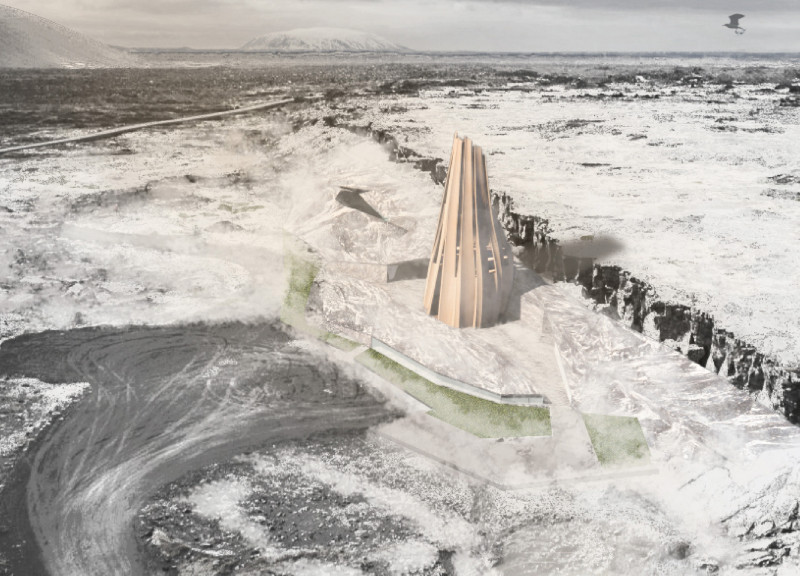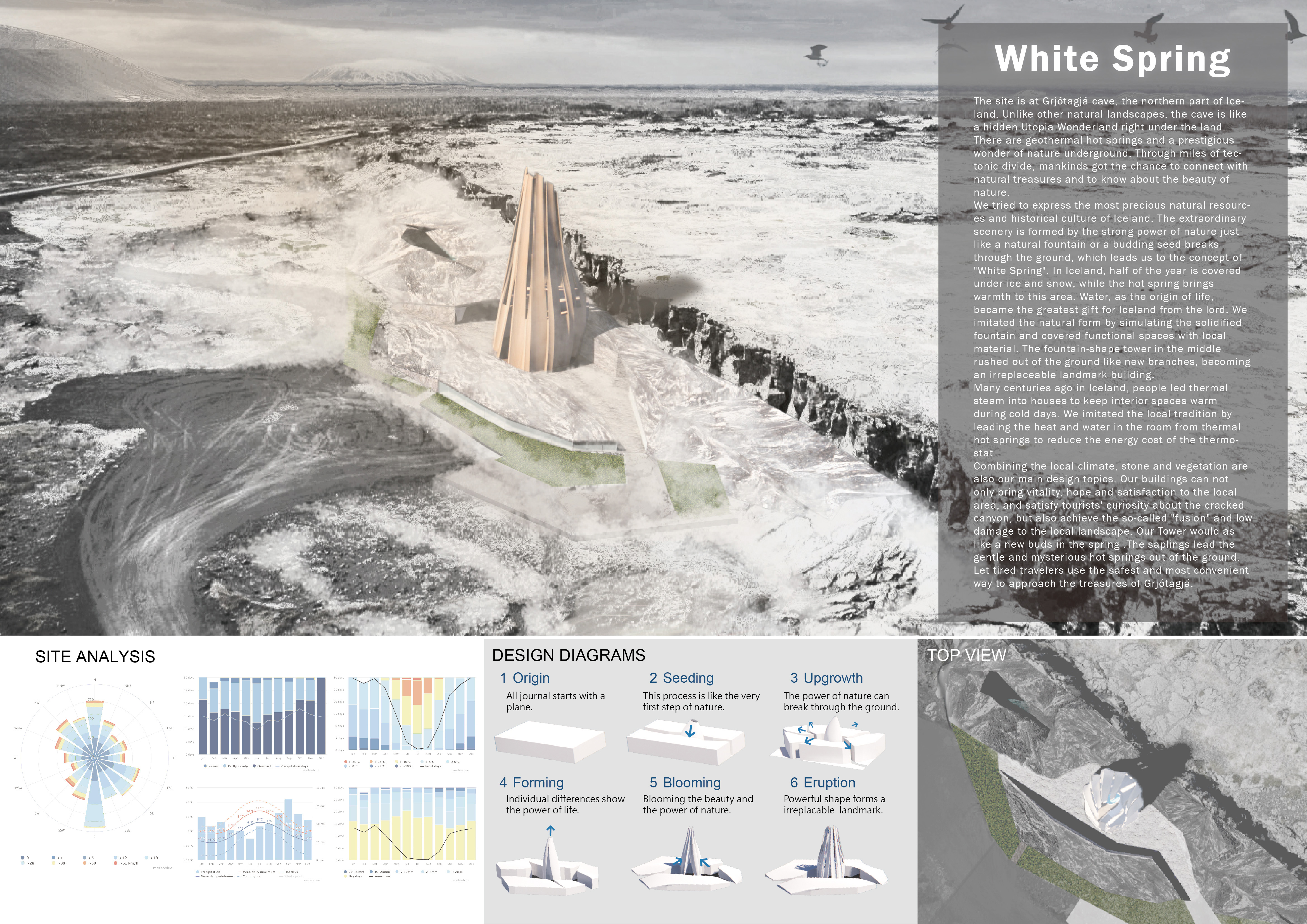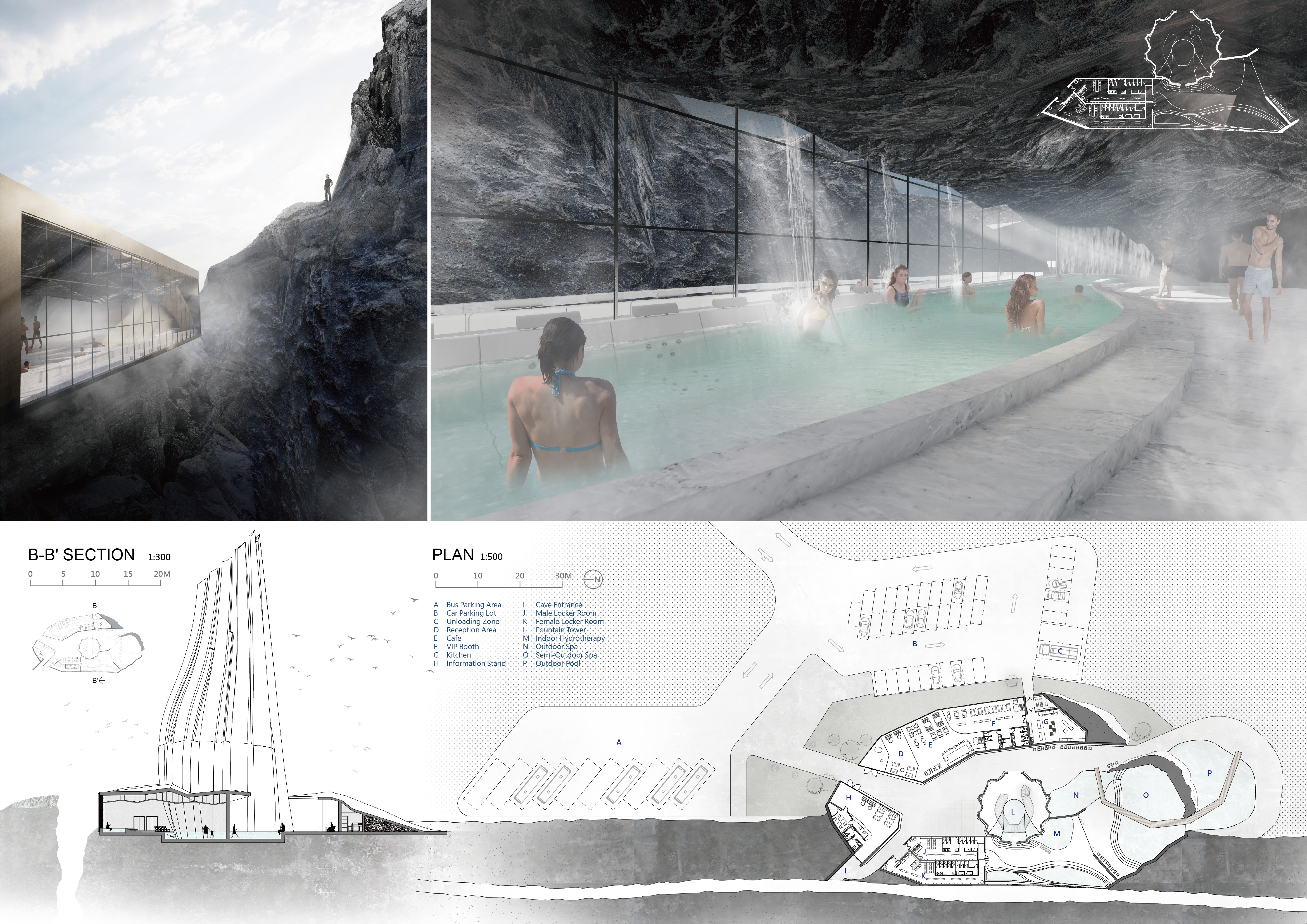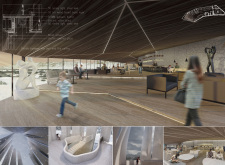5 key facts about this project
The site at Grjótagjá Cave in northern Iceland offers a striking example of architecture that engages deeply with nature. Surrounded by geothermal hot springs, the design captures the essence of the landscape, inviting visitors to appreciate its unique beauty. The concept revolves around "White Spring," which highlights the contrast between the cold, snowy winters of Iceland and the warmth emanating from the hot springs. This relationship between the built environment and the natural world is at the heart of the design.
Conceptual Framework
The design reflects the duality of the cold landscape and the inviting warmth of the hot springs. A fountain-shaped tower rises from the ground, resembling new branches pushing through the earth. This tower is not just a visual element; it also serves a functional purpose, offering an observation point and information center for guests. This approach creates a direct connection between the architecture and its environment.
Visitor Integration
Spaces designed for visitor use play a key role in the overall layout. These include an information stand, male locker room, and a semi-outdoor spa. Each area is thoughtfully positioned to enhance the visitor experience, encouraging exploration and engagement with the geothermal features of the site. This focus on accessibility demonstrates an understanding of how people will interact with the space.
Sustainability and Materiality
The project pays respect to local traditions by using thermal steam from the hot springs for heating, combining traditional practices with modern energy conservation methods. Local materials are chosen to reinforce a sense of place, promoting sustainable architecture that resonates with the rugged landscape of Iceland.
Large windows are a notable feature of the tower, allowing plenty of natural light and offering stunning views of the surrounding area. This design choice creates an inviting atmosphere and encourages visitors to feel connected to the remarkable Icelandic environment.






















































